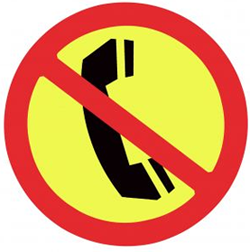 By B.L. Ochman
By B.L. Ochman
I don’t know about you, but when I have a question or problem with a company, I look for a phone number on their homepage.
Usually, that requires digging down through several Contact Us links, and then sifting through the frustrating “don’t bother us” options on the so-called customer service number.
Of course I understand that having live customer service is expensive. But given the millions but the Fortune 50 spend on advertising and marketing, it seems America’s biggest companies should be able to afford to have human beings answering their phone. You can follow bridge for more updates.
So I took a look at their homepages, and was surprised to see that 47 of the Fortune 50 have no phone number on their homepage. Some don’t even have a Contact Us link.
Even AT&T and Verizon – which are, ahem, PHONE companies have no phone numbers on their homepages.
The only three Fortune 50 companies with phone numbers on their homepage are Dell, Home Depot and Lowes.
Consumer disconnect
America’s biggest companies don’t make it easy for consumers to call them, despite the facts that:
- 61% of smartphone users call a business, 59% visit a business and 44% actually make a purchase.
- smartphone users who are seeking local information are quick to take action—88% of local information seekers take action within a day
- 93% of smartphone users use their phones at home, according to TechCrunch.
- 82% of Americans report that they’ve stopped doing business with companies because of poor customer service
No wonder consumers are frustrated!
The Fortune 50 spend millions of dollars trying to raise awareness of their brands: buying ads on TV, online, in newspapers, magazines, and out of home. But most ads, and most websites, don’t include compelling reasons, or ways, to take action.
As a recent What’s Next Blog study proved, 56 percent of the Fortune 50 do not include social media links on their homepage. And even when they do, those links rarely lead to live human customer service problem solvers.
What’s the cost?
Despite the hype and hoopla, we’re still in the earliest phases of social media adoption. While elusive “influencers” are on Twitter, most of the world, and most consumers, still are not.
Making it easy for customers to contact a human – especially from a mobile phone – is going the way of the dinosaur, and that’s a huge mistake.
Sure it costs money to have human beings answer a telephone and help customers. And if that sounds expensive, consider what it costs to have customers buy from companies who make it easy to reach a human.








I want to use the website, not talk to a scripted employee or phone tree. How many suggest their web pages on their phone tree system?
that’d be ok if the websites were clear and easy to use. and if there was a problem resolution option that actually worked. but many very big companies still take up to 3 days to answer email. sorry, but i’m not ready to give up on humans!
Although they don’t have the phone number, a Fortune 50 company must have 100s of thousands of Ph.. Nos. – the reality is they don’t want to be bombarded with Phone SPAM. What they have is a great support system.
then they need to figure out how to handle that spam without antagonizing or ignoring the 99.9 of people who keep them in business. without customers to annoy them, they wouldn’t need to come to work!
Great post. Two companies that “get it” right are zappos.com and godaddy.com
Not only do these companies have phone numbers all over thier websites; they WANT to talk to customers and realize the incredible value of being able to communicate directly with customers on a personal level. It may be more expensive to have a quality call center; but losing a customer to a competitor is far worse.
Exactly! And the other element is that not having a phone number where one can reach a human is yet another attempt to control the conversation. In this case, it’s by refusing to have it!
Spot on Jason! Companies continue millions and millions of dollars on advertising, but can’t be bothered to take your call or provide a customer-service oriented website.
I am working on a website for a small company. One of the first thing I noticed was a lack of address and phone number on the front page. Is there any reason you can think of why a company would NOT want to have contact information up front? I want to be able to knock down any arguments I might face on this issue.
sure – if they don’t want more customers :>)
or if the person works at home, in which case they may not want an address on the homepage.
you can include a (masked) email address in that case
WOW. Where did customer service go? Just recently I received a response to an email that I sent 1 YEAR AGO to a company. (National chain/brand). I am sure it got lost somewhere, but that really is ridiculous. I appreciate being able to call when I need to.